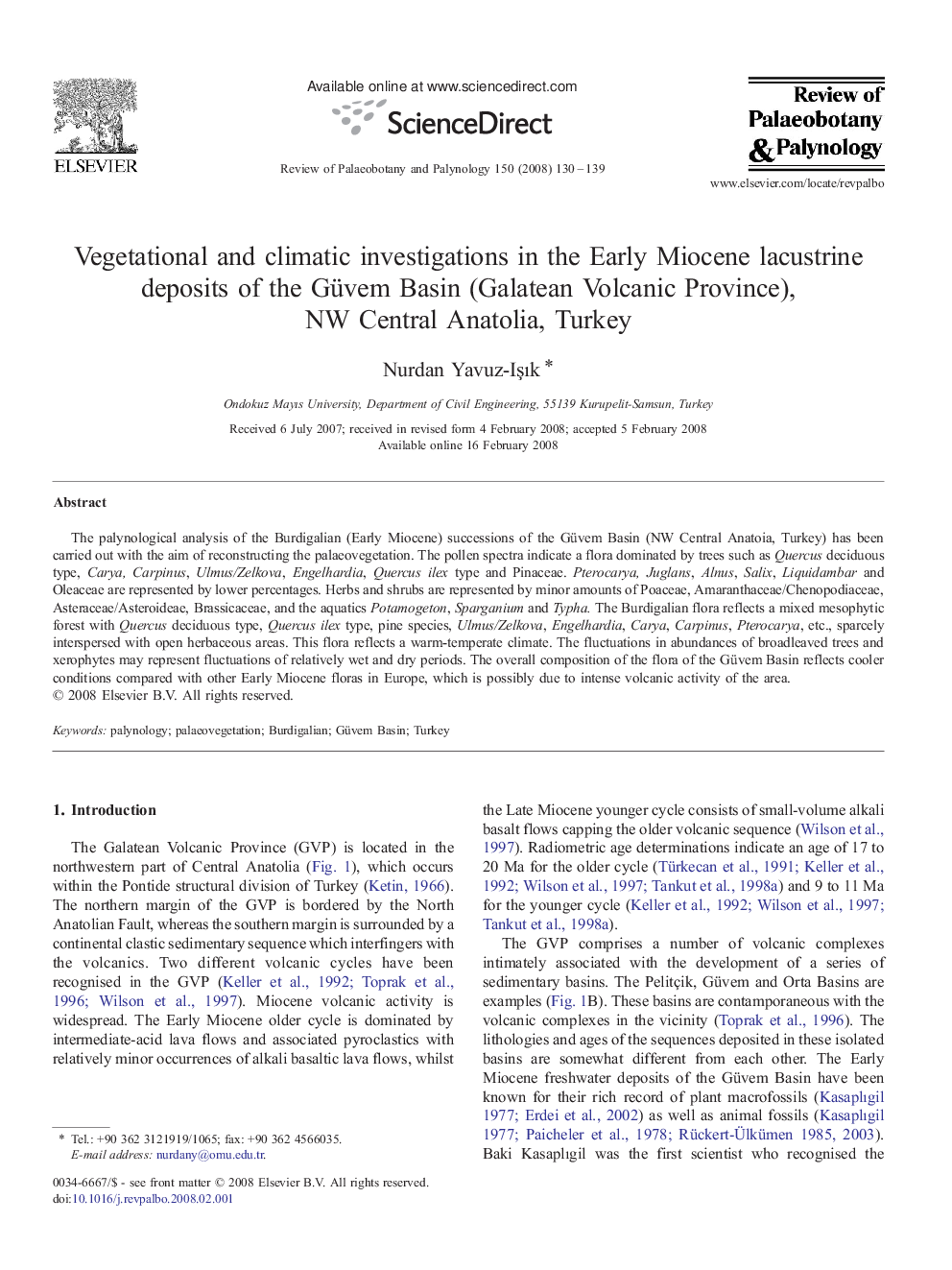| Article ID | Journal | Published Year | Pages | File Type |
|---|---|---|---|---|
| 4750958 | Review of Palaeobotany and Palynology | 2008 | 10 Pages |
The palynological analysis of the Burdigalian (Early Miocene) successions of the Güvem Basin (NW Central Anatoia, Turkey) has been carried out with the aim of reconstructing the palaeovegetation. The pollen spectra indicate a flora dominated by trees such as Quercus deciduous type, Carya, Carpinus, Ulmus/Zelkova, Engelhardia, Quercus ilex type and Pinaceae. Pterocarya, Juglans, Alnus, Salix, Liquidambar and Oleaceae are represented by lower percentages. Herbs and shrubs are represented by minor amounts of Poaceae, Amaranthaceae/Chenopodiaceae, Asteraceae/Asteroideae, Brassicaceae, and the aquatics Potamogeton, Sparganium and Typha. The Burdigalian flora reflects a mixed mesophytic forest with Quercus deciduous type, Quercus ilex type, pine species, Ulmus/Zelkova, Engelhardia, Carya, Carpinus, Pterocarya, etc., sparcely interspersed with open herbaceous areas. This flora reflects a warm-temperate climate. The fluctuations in abundances of broadleaved trees and xerophytes may represent fluctuations of relatively wet and dry periods. The overall composition of the flora of the Güvem Basin reflects cooler conditions compared with other Early Miocene floras in Europe, which is possibly due to intense volcanic activity of the area.
